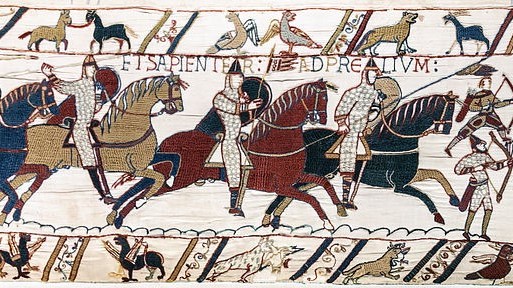Historians hypothesise that the Chinese civil service exam was a medium for social mobility in pre-modern China. Once elite advantages from grandparents and family networks are considered, however, this hypothesis is no longer tenable. Xizi Luo suggests that the exam was instead a mechanism for converging and legitimising the interests of the state and elites.
Social mobility reflects fairness in a society. The less status at birth determines status as an adult, the greater is the potential for social mobility. Many historians of pre-modern China argue the rigorous civil service exam fostered social mobility: it rewarded merit, not status. My research does not, however, support this interpretation of the civil service exam. The current consensus does not account for the wealth, record of exam success, and elite status of the examinee’s lineage beyond the parent, and consequently underestimates the persistence of elite status over time.
By using a latent factor model, I observe long run status transmission neglected by the conventional two-generation model. I find that grandparents’ and other relatives’ wealth and past success on the exam strongly influenced the persistence of elite family status, and consequently weakened the civil service exam as a medium of social mobility.
We therefore need to reappraise the civil service exam’s purpose in the Qing political economy. I propose that the civil service exam was an institutional device meant to legitimise and converge the interests of both the elite and the state. Though elites had distinct financial, academic, and social advantages, they could claim the exam as a legitimising credential of their merit. Meanwhile, the state maintained its monopoly of granting legitimate social status, satisfied the group it needed to control most, and fostered well-incentivised bureaucrats to serve the state.
Did elite status persist?
In a socially mobile society, the poor may become rich, and the rich may become poor. Whether individuals entered and left the elite civil servant class suggests how much the exam influenced social mobility.
Extant evidence of elite mobility is contradictory. Some find that influential families had considerable downward mobility and failed to perpetuate privileges for multiple generations (Ho, 1962; Campbell and Lee, 2003). Shiue (2019) and Hao (2012) refute this claim and show that high status families did maintain their status over time. Which is it?
Both studies suffer from insufficient data: one province is not enough to satisfy the problem.
To test the competing claims, I constructed a nationwide dataset covering elite families in eighteen provinces, containing measures of lifetime occupational and educational attainment for four consecutive generations. I used a latent factor model to account for the greater lineage beyond the parent-child relationship and then compared correlations of status between the latent factor and parent-child.
My results show elite status was even more correlated with the greater family lineage than the father. The heritability from the latent factor is 0.79, considerably larger than the parent-child correlation of .3-0.5. High heritability from the latent factor shows that endowments inherited within elite families contributed to persistence of elite status.
In addition to analysing elite social mobility on a national level, I investigated whether conventional estimates of parent-child correlations based on data from two successive generations can predict long-term mobility. The comparison between predicted correlations across three and four generations from the conventional model and the actual three and four generational mobility rates suggests the conventional estimator underestimates the persistence of transmission considerably.
As shown in Figure 1, multigenerational correlations from the conventional model are 45 percent and 62 percent lower than those of observed correlations. In contrast, predicted multigenerational correlations from the latent factor model reveal that the rate of converging to the mean is much slower for elite families.

The civil service exam was a legitimising tool of elite status and state power
Given that losing social status is regrettable, elite acceptance of a socially mobile society is puzzling, particularly when the state relied on elites for legitimacy and essential state services. Pre-modern Chinese governments relied on elites for legitimacy, administration, and resources for war and the civil service exam was a well-respected institution over 1,000 years old, originating in the 6th century Sui Empire. We must ask: If elite status could founder with the civil service exam, why would they accept it?
The civil service exam never plausibly jeopardized elite status. Instead, the exam sustained and legitimised elite status.
First, elites had access to financial and academic support from parents and earlier generations who had passed the exam. Education was costly. The cost of elementary education ranged between 1.4 to 3 taels per year (Rawski, 1979, p. 104-106). By the 19th century, a household earned on average 26.61 taels per year, around three taels more than the cost of maintaining a family (Allen et al, 2010). Investment in education could take up half to all spare income left over from the year’s earnings.
In addition to plain cost was the quality of tutoring; whatever investment a family risked was only effective if it went to an adequate tutor. Success for previous generations on the exam likely reduced the costs of finding quality instruction.
These costs both hindered potentially qualified but financially lacking candidates and empowered well-off elites.
Second, elites were more likely to achieve a high-paying, high-status career and marriage irrespective of their exam success – though this would be especially the case if they did pass the exam.
If they didn’t pass, their name still meant something for marriage and employment, and they still knew where to find quality instruction for their children to try again.
If an individual passed the exam, the social capital and marital networks of an elite family amplified the trajectory of their career.
These advantages compounded from generation to generation. At the least, they softened losses in status from failing the exam. If one generation failed, a high-status marriage could be arranged, and family money could still afford a quality tutor for the next generation to take the exam. At the most, they grew the stock of wealth and status of the family and buttressed its elite position.
Meanwhile, the civil service exam tethered securing elite status to serving the state. The state therefore had a pool of well incentivised elites who legitimised their status through service to the state.
Conclusion
This research has two implications.
First, society in Qing China was less socially mobile than previously understood. The high heritability of elite status points to a strong influence of family wealth, academic pedigree, and family networks on elite persistence of status through the civil service exam and civil service careers. Elite families with more resources and social capital had advantages for both examination and official careers thereafter, which in turn further strengthened their social status, and made them more able to hold on to their elite status in the long run.
Second, the persistence of elite status suggests a different political impetus for the civil service exam. Since the civil service examination legitimised elite status, the state could preclude powerful lineages from political independence and consequently had access to an abundant supply of loyal bureaucrats. Meanwhile, the elite enjoyed legitimised bureaucratic power and social recognition.
References:
Allen, Robert C., Jean‐Pascal Bassino, Debin Ma, Christine Moll‐Murata, and Jan Luiten Van Zanden. “Wages, prices, and living standards in China, 1738–1925: in comparison with Europe, Japan, and India.” The Economic History Review 64 (2011): 8-38.
Campbell, Cameron, and James Lee. “Social mobility from a kinship perspective: Rural Liaoning, 1789–1909.” International Review of Social History 48, no. 1 (2003): 1-26.
Ho, Ping-ti. The Ladder of Success in Imperial China: Aspects of Social Mobility, 1368-1911. New York: Columbia UP, 1962. Print
Hao, Yu. Social Mobility under Three Regimes, China, 1645–2012. University of California, Davis, 2013.
Jiang, Qin, and James Kai-Sing Kung. “Social Mobility in Pre-Industrial China: Reconsidering the ‘Ladder of Success’ Hypothesis.” Available at SSRN 3255796 (2016)
Shiue, Carol H. “Social Mobility in the Long Run: A Temporal Analysis of China from 1300 to 1900.” (2019).
Rawski, Evelyn Sakakida. Education and Popular Literacy in Ch’ing China. Ann Arbor: U of Michigan, 1979. Print. Michigan Studies on China.
Click here for a Mandarin language version.




